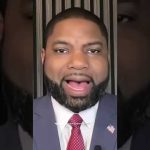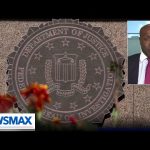The Federal Reserve moved again this week, cutting its benchmark interest rate for the second time in 2025 and lowering the federal funds target to roughly 3.75 to 4.00 percent. This is a clear policy pivot from the “higher for longer” rhetoric that dominated last year, and it signals that the central bank is increasingly worried about the softening labor market and slowing growth.
That follow-on cut came on the heels of a September reduction that nudged rates down to the 4.00 to 4.25 percent range, so the Fed is now in a steady easing posture after a long run of hikes. Policymakers claim they are balancing inflation risks against employment concerns, but the sequence of moves reads like a reluctant retreat from rate normalization.
Chair Jerome Powell was careful to remind markets that further reductions are not guaranteed and that the Fed remains divided over the right path forward, especially with critical economic data hampered by the ongoing government shutdown. That uncertainty — missing reports, incomplete labor data, and internal disagreement — makes the Fed’s job harder and underscores how dangerous it is to let politics and bureaucratic dysfunction interfere with economic decision-making.
For borrowers the immediate headlines will feel like good news: short-term borrowing costs should ease, credit-card rates and some business loan pricing could moderate, and certain adjustable-rate borrowers will see relief. Homebuyers may get some breathing room if mortgage pricing loosens, but those effects are uneven and banks often move more slowly than markets, so don’t expect an instant windfall for every household.
On the other hand, savers already punished by years of low real yields see little consolation in rate cuts; banks can take their time passing through higher returns on deposits, and many Americans relying on interest income will continue to struggle. The Fed’s maneuvering risks rewarding debt-laden households and speculative investors more than the prudent saver who saved for a rainy day.
A sober conservative take is unavoidable: monetary tinkering cannot substitute for sound fiscal policy. Years of excessive spending, trade meddling, and regulatory burdens have made the economy brittle, and now monetary policy must try to paper over the cracks while politicians punt on reforms. The real solution is to shrink Washington’s appetite for debt, unleash supply-side growth, and stop politicking our economic statistics into oblivion.
There are also real risks to repeated easing — asset-price distortions, misallocated capital, and the temptation for cronies to chase easy money instead of competing on value. The Fed’s announcement that it will end its balance-sheet runoff in December only adds another layer of accommodation that could prop up markets without fixing underlying structural problems.
If Americans want durable prosperity, they should demand policy that respects sound money and limits the size of government rather than depending on central bank reprieves. Lower rates can help in the short term, but long-term resilience comes from unleashing entrepreneurship, lowering taxes, and restoring fiscal sanity so the next shock doesn’t leave ordinary people scrambling while elites debate another round of temporary fixes.




